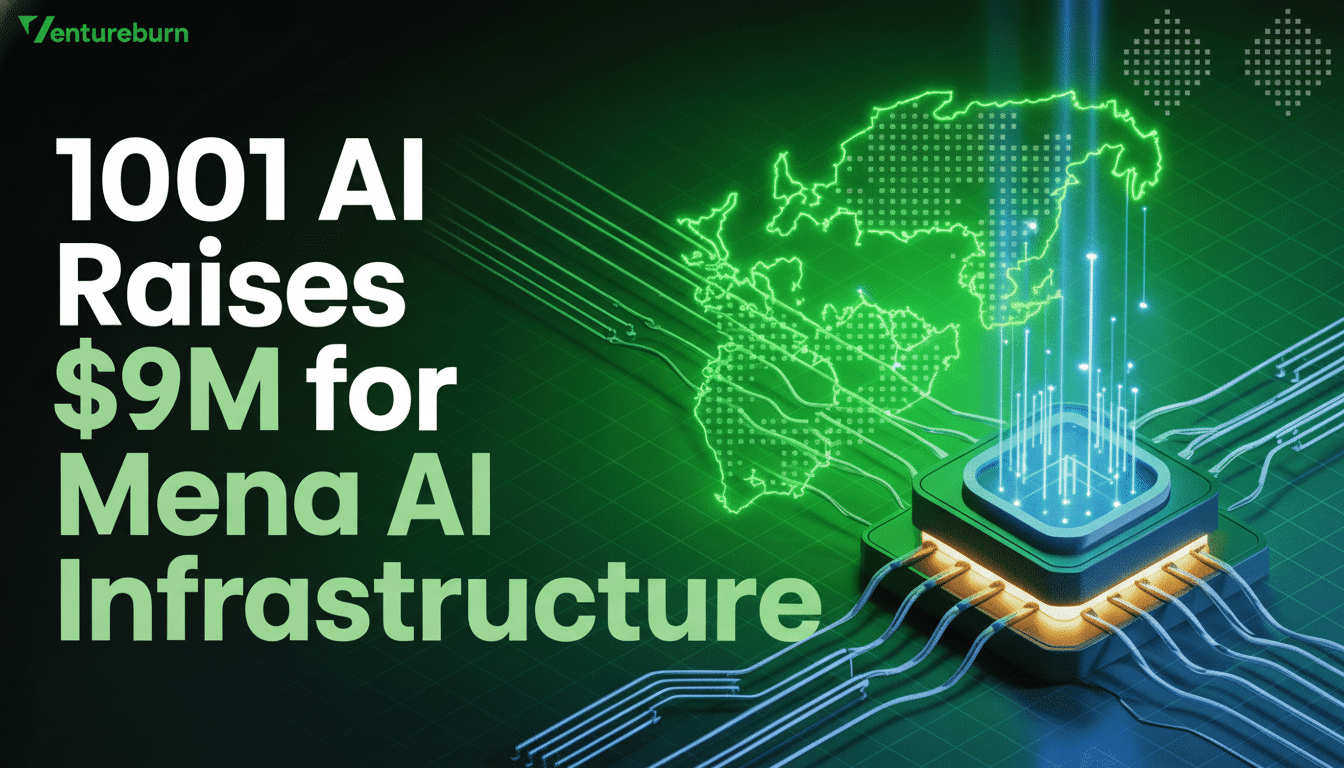A former leader of Scale AI, one of the best-known venture-backed artificial intelligence companies to come out of Silicon Valley in the past half decade, is pitting himself against the entire machine learning industry with a new tool that’s designed to simplify the software side of potential services businesses building on and around AI.
The new company, 1001 AI, is focusing on aviation, logistics, construction, and energy — industries where minutes count and profit margins are slim, and even incrementally lifting productivity can equal huge dollar savings.
- Seed Round Fuels Industrial-Grade AI for MENA Operations
- An OS for Physical Operations in High-Stakes Sectors
- Why the Gulf Makes a Fertile Testbed for Industrial AI
- From Data Labeling to Decision Engines for Industry
- Go-to-Market Anchored in Co-Development with Clients
- Trust, Safety and Data Residency in Critical Environments
- Competition and What to Watch in Industrial AI Orchestration

Seed Round Fuels Industrial-Grade AI for MENA Operations
Leading the round were CIV, General Catalyst, and Lux Capital, who were joined by an impressive list of global and regional operators such as Stanford’s Chris Ré, Replit’s Amjad Masad, DAMAC’s Amira Sajwani, RAED Ventures’ Khalid Bin Bader Al Saud, and Lean Technologies’ Hisham Al-Falih.
The new capital will be used to finance early deployments throughout the Gulf, as well as grow teams in engineering, operations, and go-to-market departments.
Founder and CEO Bilal Abu-Ghazaleh, who grew up in Jordan but spent time working in Silicon Valley, had previously worked to scale data operations at Scale AI back when generative AI was the trend. His new business is grounded in a simple idea: industrial performance is an orchestration problem, not just one of reporting, and AI can conduct assets and people with machine-speed precision.
An OS for Physical Operations in High-Stakes Sectors
1001 AI is developing a decision engine that takes in real-time signals from a customer’s existing stack — an ERP, maintenance systems, IoT sensors, and SCADA feeds — and spits out directives to reassign crews, reroute vehicles, and sequence tasks based on conditions that evolve.
Think of it as an air-traffic control tower for complex undertakings, only fueled by learning models instead of checklists.
Think of airport turnarounds: a late cleaning crew or a misdirected fuel truck can cascade through a hub’s schedule. Eurocontrol’s cost-of-delay models put weighted on-the-day disruption at about €100 per minute in Europe; similar calculations are a helpful yardstick worldwide. Spot a few minutes per plane that can be planed off through an orchestration layer, or shave down missed connections — and the cuts are direct cost savings to airports and airlines.
The same is true in ports, on construction sites, and across oil and gas logistics: there is always too much idle equipment or bottlenecked workflow, weather or supply variability to derail what has been scheduled. By modelling workflows and simulating scenarios, the system is able to recommend the best sequence of works, crew allocations, and plant usage before executing them via integration with field and dispatch tools.
Why the Gulf Makes a Fertile Testbed for Industrial AI
The Gulf nations are pouring money into AI infrastructure and industrial digitization. Companies like Abu Dhabi’s G42 and Saudi Arabia’s National Center for AI are the tip of the spear of a wider policy push to localise talent, compute, and sovereign data capabilities.

Gulf Logistics: Steady Growth, with Inefficiencies Looming Large
The World Bank’s Logistics Performance Index shows the region’s premier hubs continuing to make gains, but cross-border and terminal variabilities still fail to make all the efficiency plays.
Large-scale projects intensify the opportunity. A study led by Bent Flyvbjerg of Oxford has found that around nine in ten megaprojects worldwide come up short on cost or schedule — a record the region is keen to turn around. In that light, an AI layer that can shorten critical paths, cut down on slack time, and optimize resource consumption is no longer a nice-to-have but a fiscal lever.
From Data Labeling to Decision Engines for Industry
The distance from running enormous annotation networks to creating an industrial orchestrator isn’t nearly as great a leap as it seems. The practice of taking messy, multimodal data and structuring it to be aligned with real-world outcomes maps onto operations in which telemetry, work orders, and human input can all sing together. Indeed, underwriting the bet is that execution muscle — along with regional fluency and access — matters.
Go-to-Market Anchored in Co-Development with Clients
1001 AI is planning its first customer deployment by the end of the year, with construction as an opening beachhead and then aviation and logistics. The company’s model places its engineers and operations specialists in the field with client teams to run short sprints that encode local realities — like shift rules, safety constraints, and union requirements — into the AI. Preliminary talks are under way with some of the biggest builders and airport operators in the Gulf.
Instead of just another dashboard sale, the product is pitched as a control layer sending and tracking the actions. That should make those operators receptive to performance-based contracts in which ROI is measured in throughput, turnaround time, or asset utilization improvements — metrics they’re already familiar with.
Trust, Safety and Data Residency in Critical Environments
Mission-critical environments hold themselves to a higher standard of dependability and control. Look for deployments to offer on-premises or sovereign cloud choices that fit with Mubadala’s data-residency requirements, as well as audit trails, human-in-the-loop overrides, and incident playback. For clients that straddle IT and OT, interoperation with their existing safety systems and role-based access will be as critical as the ability to predict along strict business model lines.
Competition and What to Watch in Industrial AI Orchestration
The space is not empty. Global platforms addressing industrial analytics and operations, from data integration suites to fleet and asset intelligence providers, have traction. 1001 AI’s differentiation will be real-time orchestration that closes the insight-to-action loop, local speed of delivery, and the generalized ability to rubric out workflow patterns across industries in a snap, not months of bespoke engineering.
If the company can routinely cut 5–15% off turnaround time, move the dial on overall equipment effectiveness, and decrease overtime and fuel burn, then momentum will come. In an area doubling down on infrastructure and AI, a decision engine that pays for itself in weeks, not quarters, might just become standard kit across terminals, sites, and control rooms — as well as a template for future growth beyond MENA.

